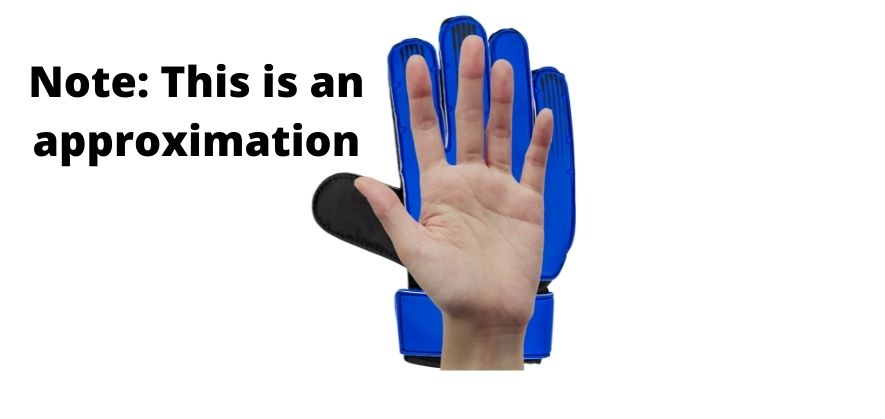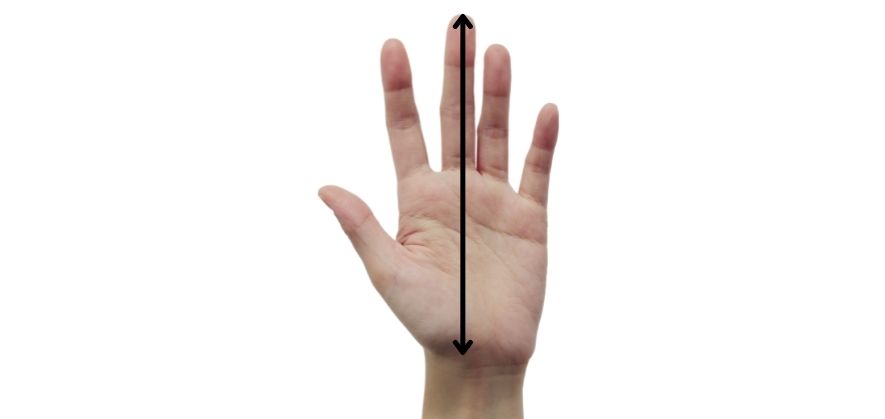The attitude that soccer players previously had towards goalkeeper gloves has gradually transformed over the years.
In the 19th century, goalkeeper gloves never even existed!
Participants simply didn’t see the need to wear such hand gear, typically justifying that their palms were strong enough to do the job of keeping the soccer ball out of the net
However, goalkeeper glove uptake in the 20th century started to become more widespread after the 1950s.
It was considered a privilege to own a pair of goalkeeper gloves back then, but these days soccer standards are stratospherically high.
Now, it’s abundantly clear that having an entry level pair of this piece of soccer equipment should be the bare minimum for a goalkeeper playing at a casual or semi-professional standard.
But there’s a plethora of different factors to consider before you settle on a specific pair.
One particular problem area that buyers struggle with relates to how tight goalkeeper gloves should fit.
This article will therefore debunk the mystery of how tight a pair of goalkeeper gloves should be, starting with a clear and straightforward answer…
Your goalkeeper gloves shouldn’t fit too snugly as this puts greater stress on the material components, therefore increasing the likelihood of premature wear and tears. Conversely, goalkeeper gloves that fit too loosely could provide an unnatural grip which affects confidence and subsequent performance levels.
In the grand scheme of things, you want your goalkeeper gloves to last as long as they possibly can, so it’s all about striking the right balance.
Let’s now discuss this topic in greater detail.
How tight should goalie gloves fit?
The answer outlined above gave you a bit of a guideline as to what sort of fit you should be looking for when you test out different sizes of goalkeeper gloves.
But it’s important to get even more specific here.
You should pick goalkeeper gloves that appear slightly larger than the size of your own hands.
To verify this, you can place the pair you’re interested in on a flat surface, before laying one of your own hands (either right or left) right on top of the glove you’ve selected.

If you see the glove outline protruding slightly from underneath your fingers, that’s a good start.
Essentially, when you wear the correct fit of goalkeeper gloves, your fingertips shouldn’t touch the tips of the glove.
Goalkeeper gloves that fit too tightly put a lot of pressure on the materials, especially because of the fact that a lot of different hand actions (e.g. clenching fists for punches, stretching fingers for fingertip saves, etc.) are performed throughout periods of play.
In the same manner, there shouldn’t be an excessive amount of room present in between your fingertips and the ends of each glove finger as that would make for a “floppy” fit that severely hinders your ability to catch soccer balls.
From a metric perspective, you want to be looking at about a quarter to a half of an inch (¼” to ½”) in spacing between the end of your fingertip and the glove itself.
How to find out your goalkeeper glove size
As a general rule, you will be able to determine the size of your goalkeeper glove by performing the following steps:
- Measure the distance between the tip of your middle finger all the way down towards the bottom of your palm.
- Add approximately 0.25 to 0.5 centimeters of length to the measurement above to allow for a little more room within the glove
- Consult a manufacturer’s glove size chart and match the length in the previous step to the specific glove size
Imagery always helps to illustrate certain complexities, so you can picture that first measurement step through the diagram below:

So by adding a quarter to a half of an inch to the length pictured above, you will have given yourself the optimum fit.
You can also check out the video footage below, as it offers some insight into how people should determine the correct fit of a goalkeeper glove:
Should goalie gloves be big?
The answer here lies somewhere in the middle of “yes” and “no”.
Obviously, as a goalkeeper you want to get a big hand behind a soccer ball that’s struck towards you.
This increases the likelihood that you’ll be able to block its flight path much more effectively.
On the other side of the spectrum however, if your goalkeeper gloves are too big you’ll struggle to make solid contact with soccer balls that approach you.
Excessive room within the glove means large parts of the glove finger have nothing but air keeping them in place.
So, what would happen if you tried making a fingertip save?
The ball would simply glide over the glove fingers as there isn’t enough of a barrier to stop the ball from passing through.
Ultimately, the hand and the glove should feel like one element, as these two components should work in combination with each other to get strong contact on the soccer ball.
So that’s why you’ll want to achieve the balance that was referenced at the start of this article.
Not too big, but not too small either.
Wrap up
Now you know just how tight your goalkeeper glove fit should be.
Just as a recap however…
Goalkeeper gloves should not fit too tightly nor too loosely, as a compact hand fit can accelerate material wear and tear. On the other hand, excess space causes a “floppiness” within the glove that can have a negative impact on grip levels and subsequent player performance.
So, that’s that!
If you’ve had a blast reading this piece then do yourself a favor by taking a look at this product roundup on the finest goalkeeper gloves.
You can really ease your selection headache with some of the options outlined in that piece.
If you enjoy the content that I create and would like to buy me a coffee, then I’d really appreciate it!
Any money that I earn through this donation will be re-invested into more content for this website.
Additionally, by sending in a donation you’ll also receive a copy of my recently released 190+ page eBook on Soccer Ball Care, as well as be subscribed to our mailing list where you’ll be regularly informed on the latest developments concerning the Soccer Whizz blog.
- Future Icons: Europe’s Emerging Midfield Maestros Set for Glory - December 4, 2023
- Kickstarting a Revolution: How Soccer Transformed the United States Over the Last Four Years - October 7, 2023
- 4-1-4-1 Soccer Formation [Analysis] - September 23, 2023

